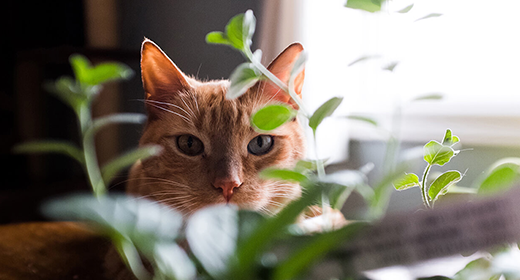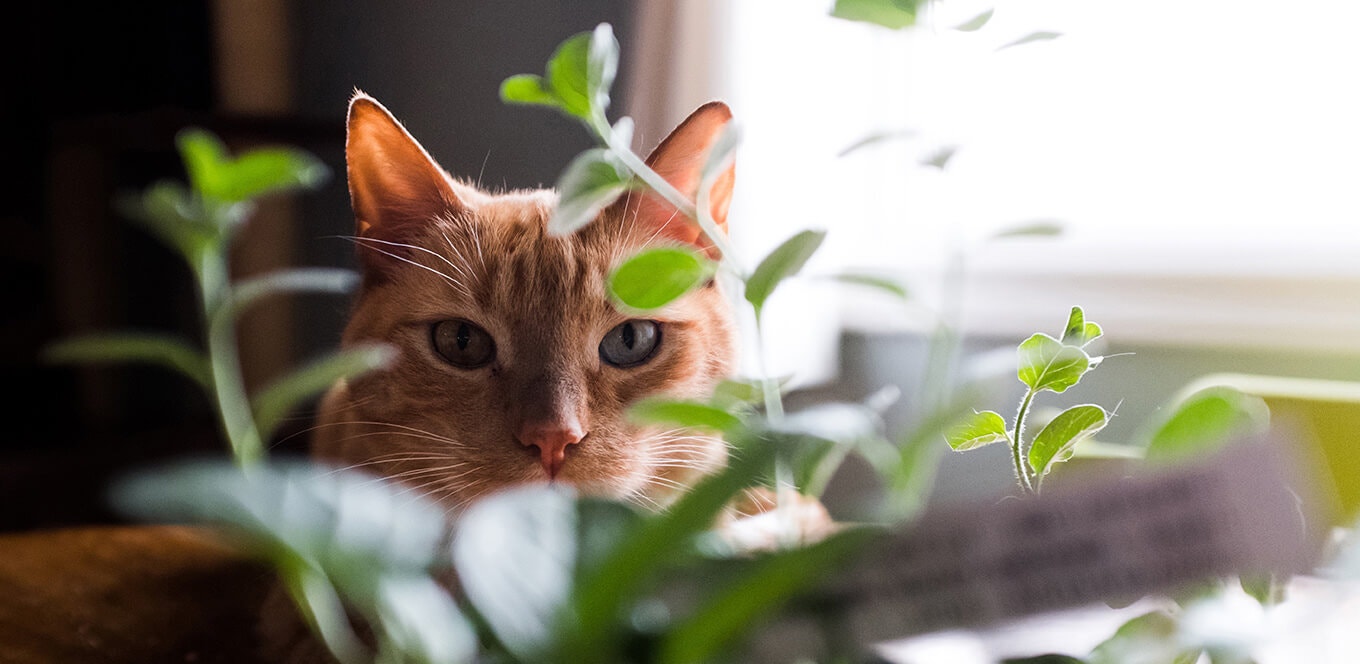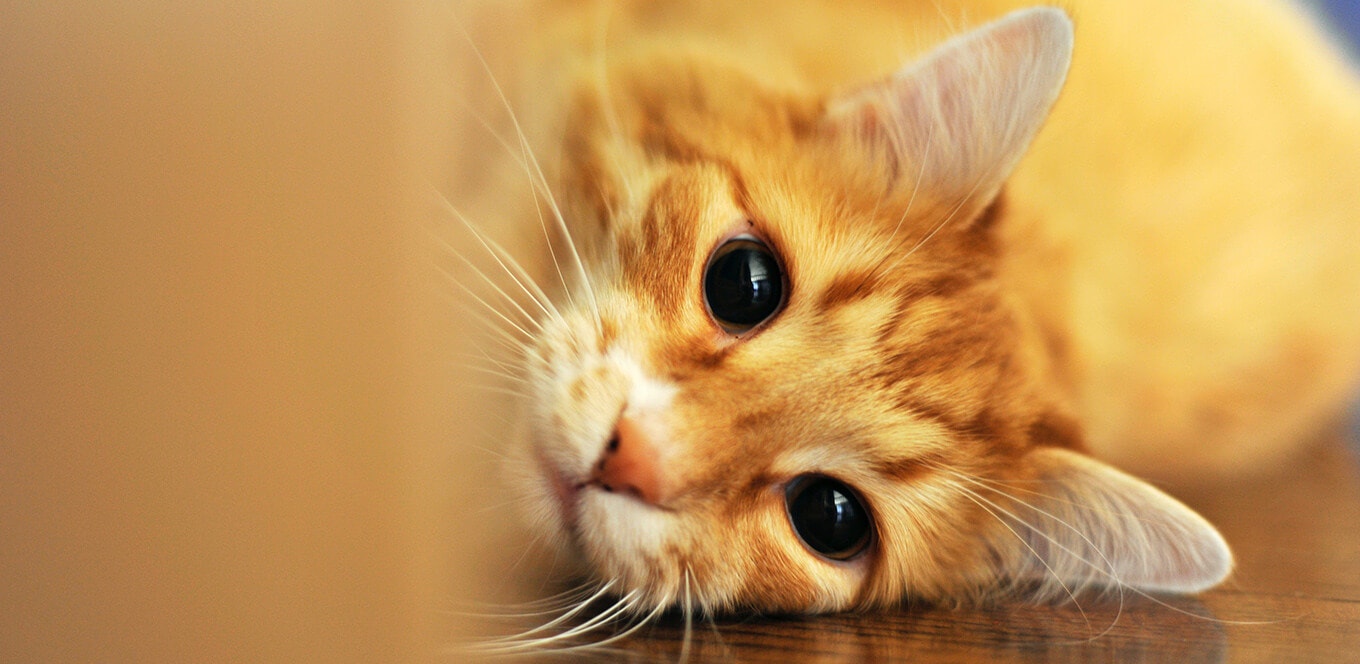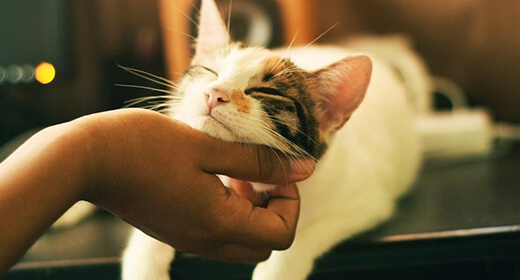

When a cat's body gets sensitive to its environment, it develops allergies. So, if you notice that your cat is feeling unwell and is constantly sneezing or scratching itself, it could be due to cat allergy reactions. These allergens are unpleasant substances that may or may not irritate you, but when your cat's body tries to rid itself of them, it may exhibit a variety of symptoms.
While it’s normal for cats to show different symptoms depending on the allergy, those that affect their breathing are the most serious ones. So, if your cat suffers from breathing issues due to allergies, it can take a life-threatening turn. Sometimes, the itchiness can also cause skin irritation leading your cat to chew on its paws or tail relentlessly.
Fortunately, these cat allergies are treatable once the allergen affecting your cat is identified. Therefore, knowing how to detect if your cat has allergies and what’s causing these allergies can help you prevent problems in the future.
The first step toward treating your cat’s allergies is finding out what’s causing them. A visit to the veterinarian is the simplest way to identify your cat’s allergy stimulus.
Causes of cat allergies could be due to several reasons, all of which fall under one of the three categories. These categories are, namely – flea allergy, food allergy, and environmental allergy (atopic dermatitis).
One of the most common cat allergy signs is flea allergies. These allergies are generally caused by flea bites or flea treatment medicine. Excessive itching is the most predominant symptom of this type of allergy. It's likely that your cat is allergic to fleas if you find it scratching or frequently chewing on its fur, especially directly above the tail.
Food allergies in cats can cause vomiting, diarrhea, and even itchy skin, especially around the neck and head. This type of allergic response might cause your cat to shed patches of fur in severe circumstances. In such extreme cases, your vet can help you detect which foods are causing irritation and develop an appropriate diet for your cat.
Environmental allergies may have different triggers, including plants, pollen, and mold. This type of allergy can also be induced by cleaning products, or the fragrance included in some types of cat litter. Another type of environmental allergy is feline atopy. It is commonly known as feline atopic dermatitis, a severe allergic reaction in cats that causes extreme itchiness in their skin. As a result of this condition, your cat may suffer from skin soreness, redness, scabbing, and even hair loss.
Depending on the kind of allergy your cat has, symptoms can range from unpleasant to life-threatening.
Diarrhea is frequently related to staining of the fur around the hind end in some breeds. In normal cats, you can observe some variation in the consistency of their stool. Dietary changes can also cause temporary changes in their stool. But, if you notice frequent semi-liquid or liquid stools for more than two days, you should consult your vet.
There are different causes to why a cat makes a wheezing sound. It could be due to a hairball stuck in its stomach or allergens like pollens, mold, or cigarette smoke. However, this wheezing sound can also be linked to discomfit or stress. Because each cat's triggers are unique, it's critical to be aware of the surroundings and activities in your cat's environment that could be causing stress-related wheezing.
Watery or glossy-looking eyes are other prominent cat allergy signs. While a cat's moist eyes maybe caused by allergens such as mildew dust or household cleaning products, it could also indicate something more serious, such as a bacterial illness or virus.
Itchiness or skin redness in cats is associated with a skin condition called cat dermatitis. When this happens, your cat’s skin becomes swollen, red, and irritated, often with small blisters, as a result of an external agent directly irritating the skin or causing an allergic reaction to it.
If your cat is suffering from moderate allergy symptoms with only limited itching, medicated shampoos or rinses can help.
Anti-itch and anti-inflammatory medicines such as corticosteroids are particularly effective in treating extreme itchiness in cats. When used correctly, they can be quite safe and effective in cats. Consult your vet to identify the best course of action.
Treating your cat with flea preventatives will prevent your cat from being bitten by fleas. Plus, to lessen the chances of your cat being bitten, you should treat your home during the warmer months when fleas are more frequent. In fact, even cats who aren't allergic to fleas should use a flea preventative to avoid tapeworm and other flea-related illnesses.
To figure out which food is causing your cat's allergies, you must first put it on an elimination diet. After that, gradually reintroduce food items until you find the problematic allergen. The top three allergenic protein sources are beef (18%), fish (17%), and chicken (5%). Avoiding these foods will enable your cat's allergic reaction to be less severe.
The most common allergy symptoms in cats are skin reactions, regardless of the cause, and they can appear at any age. Just because your cat didn’t have allergies as a kitten doesn’t mean she won’t have them as an adult. If your cat suffers from any of the following symptoms, take her to the vet for a consultation:
Allergies can vary from cat to cat, so it is important that you work with your vet to make sure your cat gets the best possible treatment. You’ll both be happier as a result.
Cats are sensitive to a wide range of allergies. Cats, like people, can be allergic to a variety of foods, drugs, plants, and other things. However, flea, environmental, and/or food allergies are the most common allergies in cats.
Keeping your home clean, using dust-free and unscented cat litter, using flea preventatives regularly, avoiding excessive fragrances, and not smoking in the house can help keep your cat from being allergic.
If your cat suffers from allergies, some of the most frequent allergic reactions will trigger certain behaviors, conditions, and even symptoms like:
It depends on whether your cat has skin or food allergies. If your cat eats nothing but novel food and water for eight to ten weeks, the allergic symptoms in its skin will fade away. But if it is related to food allergies, then you need to find a diet that works for your cat and stick to it.
Most cats with inhalant allergies are allergic to a variety of allergens. Itching may only persist just several weeks at a time during one or two seasons of the year if the number of allergens is low and seasonal. The cat may scratch frequently if there are a lot of allergens or if they are there all year round.




Cats are known to be solitary creatures and enjoy spending time with themselves. However, as a pet parent, you must ensure that your cat remains healthy. It is advisable to keep an eye on your cat’s behaviour to detect a sudden change, even what it eats, and in how much quantity. A regular health checkup is one of the most basic yet essential steps to a cat care guide. Taking care of cats is comparatively easier than taking care of kittens. A diligently followed routine for cat care can also be quite helpful.
Medical care: Adult cats should be taken to the vet for a complete checkup at least once a year. This will ensure that your cat is in good health and will also catch any disease symptom overlooked by you.
Hygiene: Cats usually lick and clean themselves, but it is always advisable to bathe your cat every 4-6 weeks. Their crates should also be cleaned regularly to make sure they do not fall sick.
Feeding: Till the time your kitten is four months old, it can be fed three times a day. Post four months, you can begin the transition to feeding it twice a day. It is still advisable to consult a vet before deciding the frequency of the meals.
Dental care: Your cat’s dental care is just as important as yours. It is advisable to set a dental care routine right from its kitten phase. You can dip your gloved finger in a little toothpaste made for cats in its mouth to clean their teeth and gums. If your cat’s mouth smells bad, it may be an indication of a disease. So, book an appointment with your vet without any delay.
Socialising: You can get your cat to socialise too, but you have to keep a few things in mind. You may get down to its level to initiate contact and speak in a calm voice. You may also pat its head to let it get familiarised with your touch.
Now that you have brought your cat home, the next step is to comfortably settle it in your house. Housetraining might sound like a tedious task but it isn’t. With a little practise and lots of patience, you can easily housetrain your cat. Some of the most basic things to keep in mind while housetraining your cat include providing a proper litter box, spaying your cat, toilet training and cat proofing the house. Given below are some tips that may help you easily housetrain your cat:
Litter box: It is advisable to place the litter box in an easily accessible location. You should avoid moving the litter box unless necessary. And even if you have to move it, shift it a few inches every day. Also, keep in mind that your cat will not use a dirty or smelly litter box. Hence, scoop out the solid waste at least once a day and clean it using mild detergents.
Cat-proofing: It is important that you keep harmful things out of reach from your cat. First and foremost, tie up all loose cables and wires so that your cat won’t get tangled in them. Make sure candles and other flaming substances are kept at an unobtainable distance from the cat. If you use essential oils frequently, make sure your cats do not come in contact with them either, because certain ingredients in these oils may be toxic for your feline friend.
Spaying: Spaying your cat has several health benefits and ensures your cat lives a healthy life. You may fix an appointment to spay your kitten when it is as young as eight weeks old. If you have a cat, it is advisable to get it spayed before it reaches five months of age.
Toilet training: This is one of the major concerns of all cat parents. Here’s how you can toilet-train your cat with a few simple steps –
1) Place the cat’s litter box closer to the washroom.
2) Raise the height of the litter box a little every day.
3) Slowly, transition your cat to use the actual washroom every time it wants to go.
4) Give your cat a treat each time it uses the washroom. This will encourage good behaviour.
Taking care of your cat’s health comes first in the cat care guide. Even though cats lick and self-groom themselves, they cannot get better on their own if they contract the following diseases:
Vomiting: This is one of the most common health issues in cats and is caused by various factors. Hairballs, eating something inedible, or a urinary tract infection are some of the reasons why your cat may be vomiting.
Feline Lower Urinary Tract Diseases (FLUTD): Both male and female cats can contract FLUTD and its main cause is obesity or only eating dry food. Some of the symptoms of FLUTD are bloody urine, crying while urinating, straining to pee, licking around the urinary area due to pain, dehydration and vomiting.
Diarrhoea: Cancer, infection, allergy and bad food can be the causes of diarrhoea. It is advisable to give your cat a lot of fresh water to drink if it has diarrhoea.
Tapeworms: Tapeworms can cause extreme discomfort to your cat as they reside in its intestines. You can spot tapeworms with your naked eye in your cat’s stools. The symptoms of worms are vomiting and weight loss.
Feline Immunodeficiency Virus (FIV): This virus can make the immune cells attack the white blood cells in the cat’s body. This gradually weakens the cat’s immune system. FIV’s symptoms are poor coat condition, persistent diarrhoea, seizures, eye problems, lack of appetite, and recurring fever.
If you notice unaccountable minor changes in your cat, then it is advisable to rush to the vet to rule out any of the above-mentioned diseases and seek proper treatment on time.
‘How to take care of a cat’ is a question asked by many first-time cat owners, as cats can be difficult to figure out. But with a few careful steps, you can easily take care of your cat. Here are some cat care tips for first-time cat owners:
Cats are not easily adaptive to change. So, when you bring your cat home for the first time, you need to help it familiarise with the new surroundings by setting up its own space in the house. You can also add a cheery vibe to its crate by adding toys and a blanket.
Find a vet you can visit for your cat’s timely checkups. It is not advisable to ignore even the smallest recognised change in its health, and it is better to get it checked by the vet.
Cats love quality playtime as well. We recommend you get adorable toys for your feline friend to play with. You, too, can bond with your cat during this time.
Give it time to adapt to its new surroundings and the new people around them.
Ensure you buy healthy cat food for your new friend in advance and set a timetable for its meals.